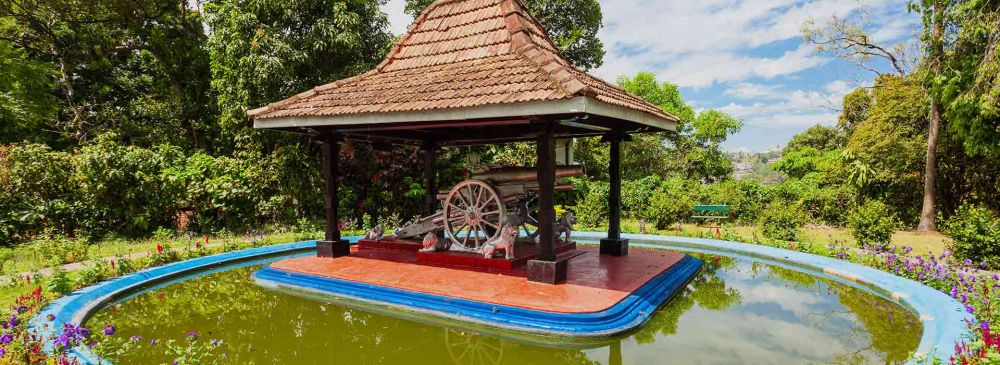

Steeped in rich history and culture, the Royal Palace of Kandy, also known as the Wales Park, is a testament to Sri Lanka's vibrant past. This majestic palace, situated in the heart of Kandy, was the last royal residence of the Kingdom of Kandy, which was the final stronghold against colonial conquest in Sri Lanka.
The Royal Palace dates back to the 14th century, constructed under the reign of King Vickramabahu III of Gampola Era (1357-1374 CE). However, the palace took on its most significant role during the era of the Kingdom of Kandy. It was home to the Kandyan Monarchs from the 15th to the 19th centuries, serving as a political and cultural center until the British colonial invasion.
Distinguished for its traditional Kandyan architecture, the palace complex included the royal court, the Temple of the Tooth (Sri Dalada Maligawa) – which houses the sacred tooth relic of Buddha, and an array of residential and administrative buildings.
In the 19th century, with the capture of the Kandyan Kingdom by the British in 1815, the Royal Palace's historical journey evolved. Although the British converted parts of the complex to governmental and administrative offices, the significance of the site persisted, attracting travelers and history enthusiasts from around the globe.
Post-independence, the Royal Palace of Kandy and the city itself became integral to Sri Lanka's burgeoning tourism industry. Preserved as a UNESCO World Heritage site since 1988, the palace is a pillar of Sri Lanka's cultural heritage tourism, inviting visitors to explore the grandeur of its past.
Today, the Royal Palace is surrounded by the serene Wales Park, offering panoramic views of Kandy and its tranquil lake. Tourists can wander along the paths of the park, or delve into history by visiting the remaining parts of the palace complex, such as the Magul Maduwa (the Audience Hall) where the Kandyan kings held their royal court.
The Audience Hall is particularly famous for its intricate wood carvings and its role during pivotal events in Sri Lankan history, such as the Kandyan Convention of 1815, which marked the end of Sri Lanka's sovereignty and the beginning of British colonial rule.
With the rise of sustainable and cultural tourism, visitors to the Royal Palace of Kandy are increasingly seeking authentic experiences that offer a deeper understanding of the historical context and cultural significance of the site. Tour operators have responded with more personalized tours and experiences that respect the site's integrity while providing an immersive exploration of Kandy’s royal heritage.
Virtual reality tours and augmented reality applications are the latest additions to the visitor experience, allowing people to visualize the past splendor of the Royal Palace. These technological advancements enhance the historical narrative and provide a unique way for tourists to connect with Sri Lanka's rich historical tapestry.
Indeed, the Royal Palace of Kandy remains a jewel in Sri Lanka's cultural crown, enchanting visitors with its historical allure and offering a gateway to the island's royal past.